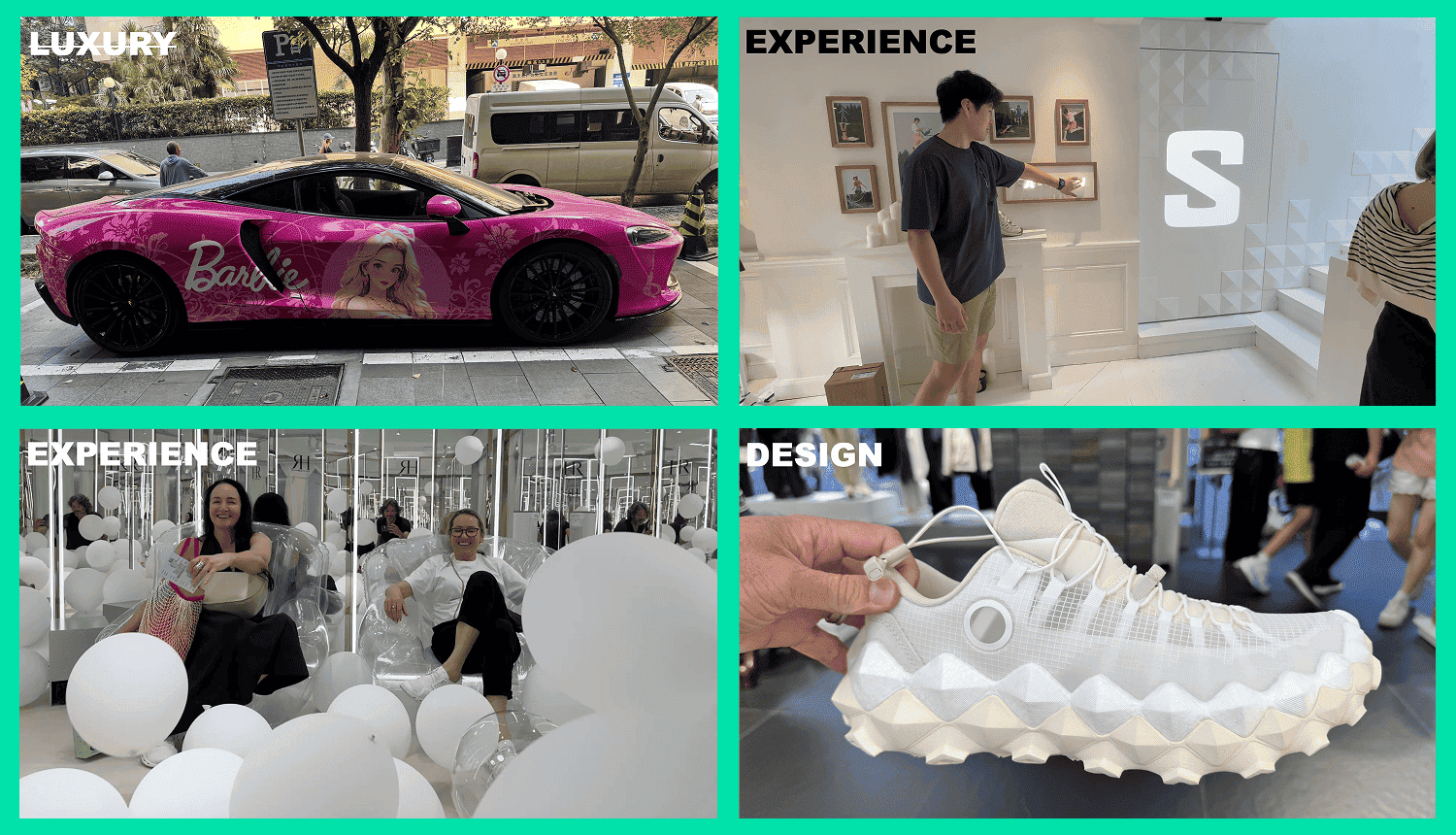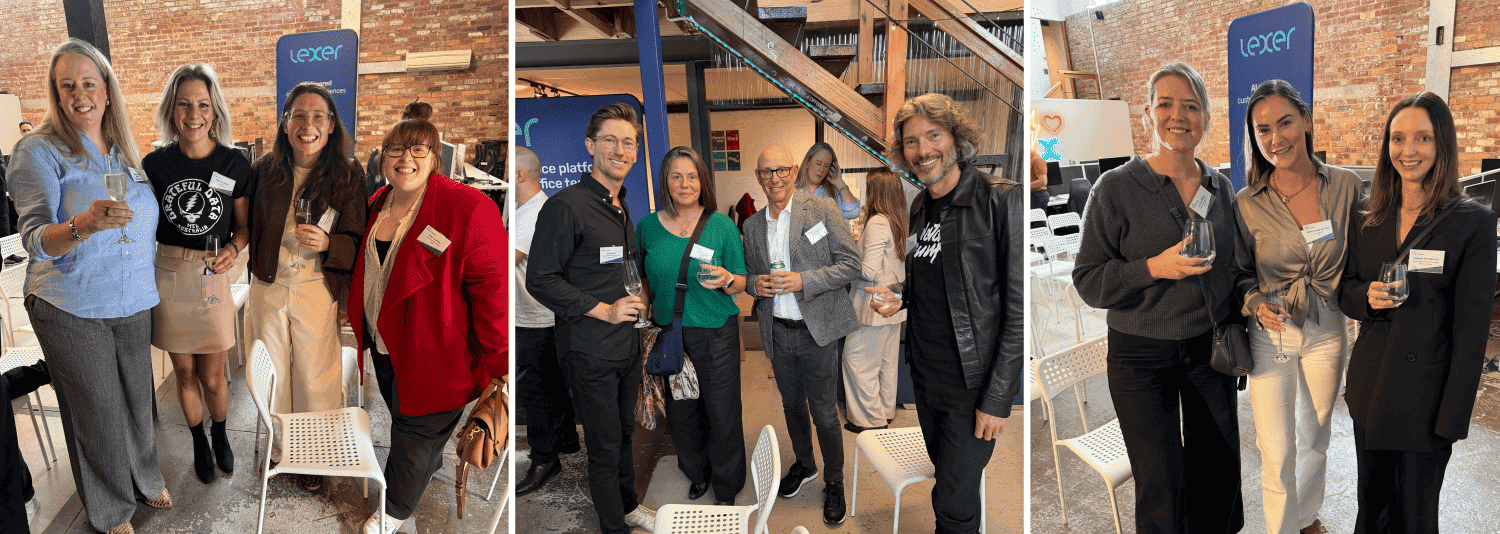November 19, 2025
Shanghai Signals: Lessons From Retail’s Fastest Market
A recap of our exclusive event at Lexer HQ
Retailers, marketers, and ecommerce leaders from across Melbourne joined us at Lexer HQ for Shanghai Signals — an inside look at the future of retail, straight from the streets of Shanghai.
Fresh off a five-day innovation tour, David Whittle (Lexer) and Anna Samkova (Albany Advisory) shared a first-hand view into how China’s retail giants move with unprecedented speed, scale, and creativity. Backed by photos, videos, and on-the-ground stories, the session gave our community a glimpse into what’s coming next for customer experience, loyalty, and omnichannel commerce.
If you missed the event, here’s your recap.

A Market Moving Faster Than Anyone Else
David and Anna opened with context: China’s population scale and intense productivity (known as 996) create a level of momentum that’s hard to comprehend from Australia. In Shanghai, government-led initiatives have led to clear skies, ultra-clean streets and waterways, limited crime and a near-fully electric vehicle network — a market optimised for rapid iteration and reinvention.
The pace is relentless.
And in retail, it's redefining what “good” looks like.

Experience First. Sales Second.
Across every flagship, pop-up, and shopping district, a consistent theme emerged: Shanghai retailers design for experience first, and conversion naturally follows. Some of the most memorable examples included:
Stores built to explore
Adidas’ flagship has taken over a historic cinema, creating a multi-level playground devoted to discovery. Weekly “China-only” product drops, on-the-spot personalization, and immersive brand storytelling replace traditional racks and rails.
Staff as hosts, not sellers
Retail staff at Salomon act more like concierges — welcoming, guiding, and curating. The goal is delight, not transactions.
Zero queues, zero friction
Ordering, returns, fittings, and payment happen through apps and QR codes. Everything is instant, fluid, designed to remove wait time entirely.
Pop-ups with purpose
Pop-ups may seem like gimmicks; but they’re strategic. Zara operated a long-term pop-up that stocked only pink products to test concepts, surfaces, and encourage social content.

Brands Scaling at Lightning Speed
China’s approach to brand building is simple: think globally, act instantly.
A standout example was Nice Rice — a streetwear brand that grew from niche startup to over 25 stores in just six years. Instead of licensing, Chinese companies often prefer to acquire American and European brands outright, giving them full control of manufacturing, storytelling, and expansion.
Their manufacturing capabilities are equally breathtaking:
- 3D-printed shoes produced in one piece in just two hours
- Machines producing injection molds with a thousand of a millimeter tolerance
- Copies that are now equal or better than original products
- Speed from idea to store opening measured in months, not years
This is a market where execution speed becomes a competitive moat.
Data Everywhere. Digital Everywhere.
If there’s one thing China does better than anyone, it’s the integration of data across every customer touchpoint.
What stood out:
- Universal QR code payments — from street food to luxury boutiques
- Loyalty as the default — every interaction feeds membership, rewards, or progression
- Live-stream selling — hours-long demos hosted by real people, not AI
- Content culture — precincts producing tens of thousands of pieces of social content per day
- Endless QR-powered gamification — scan, earn, advance, redeem
Even with fragmented transaction platforms, their obsession with customer data is unmatched — and deeply embedded into retail operations.

Vertical Integration at Unimaginable Scale
We also explored how Chinese businesses build entire ecosystems, not single products.
One example: a noodle brand that owns the entire chain — from farms to distribution. It took 15 years to build.
In tech, Xiaomi has evolved from a phone manufacturer to a global ecosystem brand spanning 40+ smart categories, including electric vehicles rivaling Porsche specs at a fraction of the cost.
Even convenience stores run differently. China’s equivalent of 7-Eleven has 31,000 locations, with 40% of revenue coming from prepared hot breakfasts and an average transaction time of a few minutes.
Why This Matters
The message was clear: what we saw in Shanghai isn’t a preview — it’s a roadmap.
Western brands may not match China’s scale, but the principles apply everywhere:
- Put experience before price and promotion
- Use technology to remove friction
- Think in ecosystems and vertical integration
- Move faster than your competitors expect
- Build loyalty strategies that customers actually value
At Lexer, these signals reinforce why we’re investing deeply in customer intelligence, identity, and engagement. Retail is shifting, and retailers who understand their customers best will win.
Shanghai Signals was a full house, and the conversations continued long after the presentation finished. To those who attended: we loved hosting you and hope the insights spark new ideas for your teams.
For those who couldn’t make it — we’ll see you at the next one.
